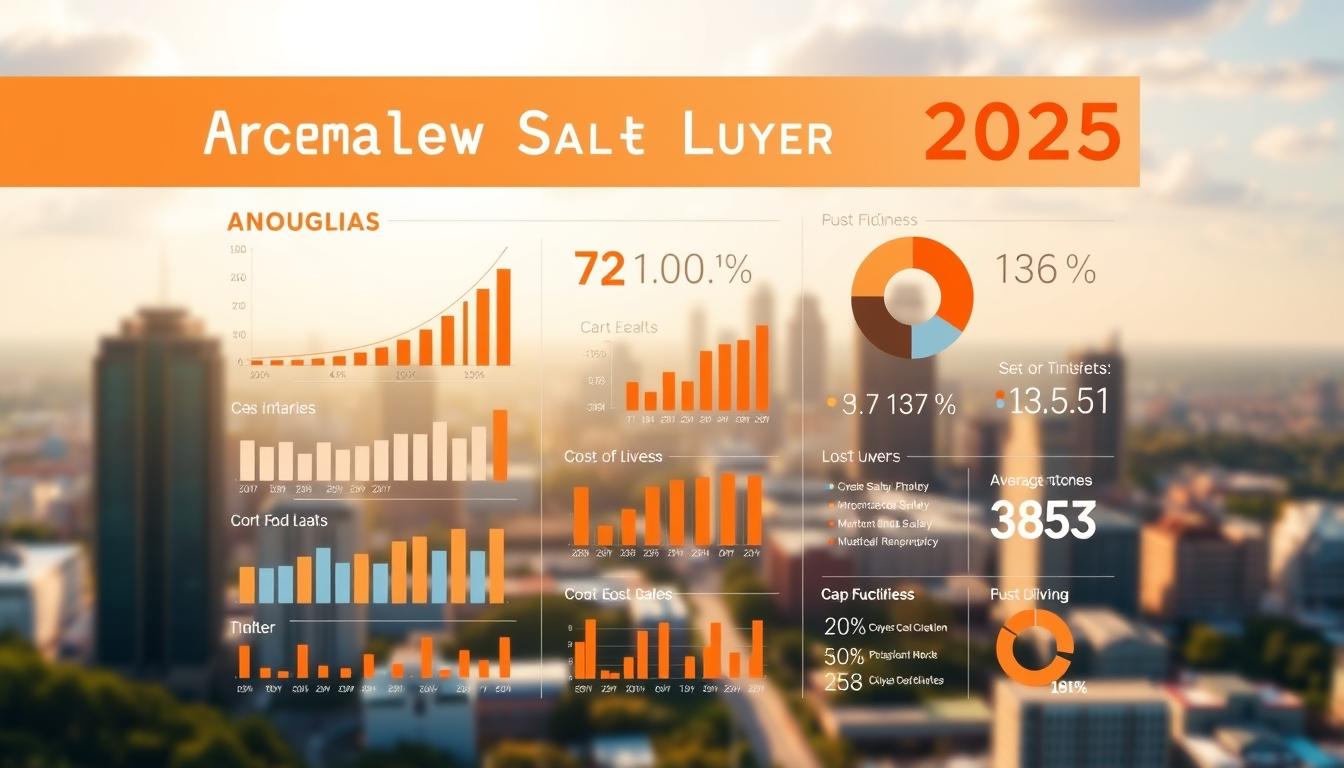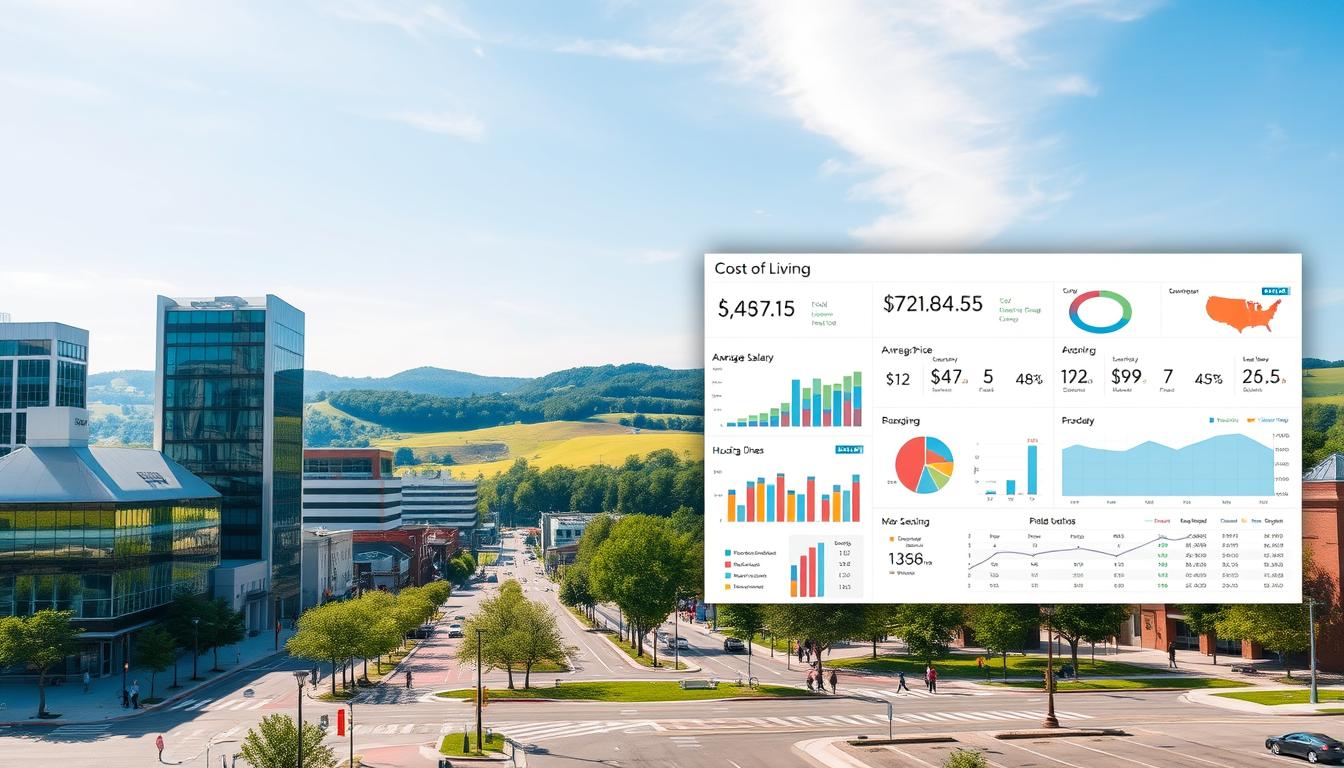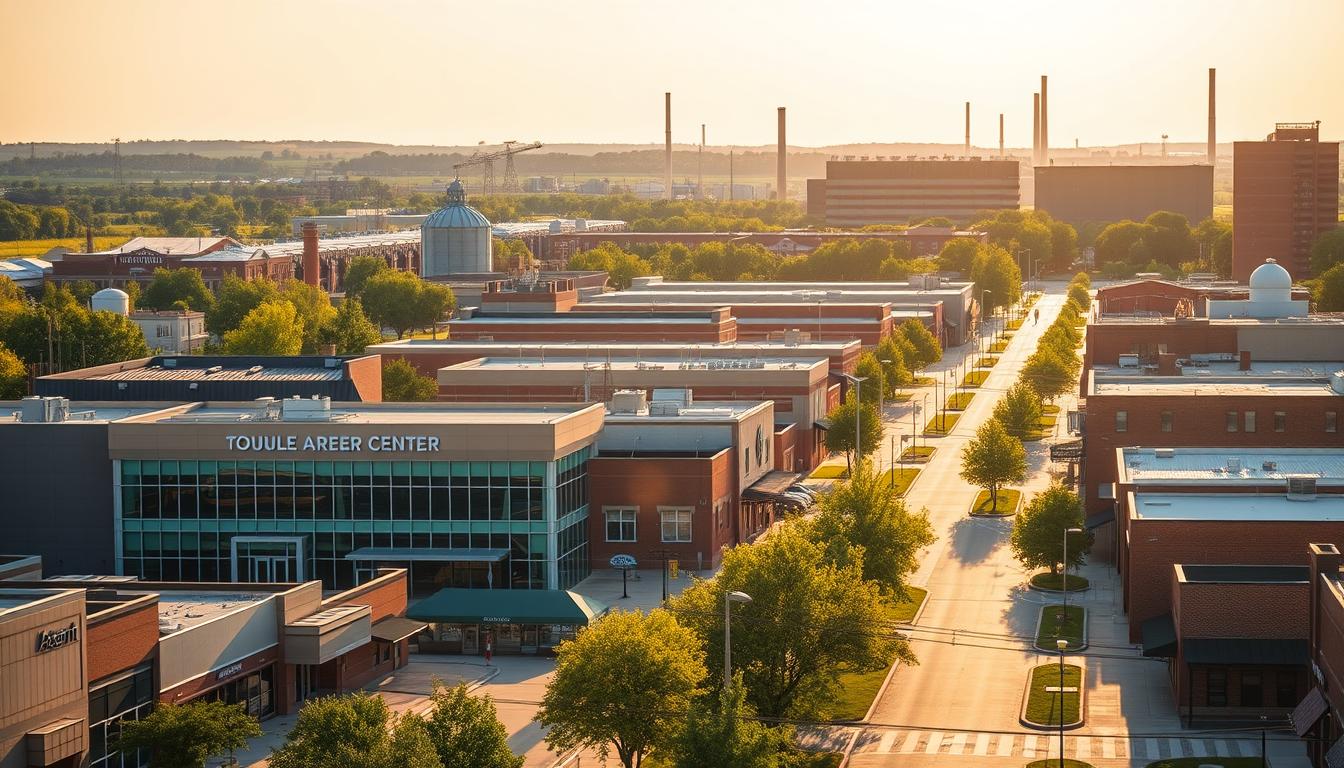What if a town with fewer than 200 residents could offer better income opportunities than bustling cities? While Santa Claus, GA, might seem like a quiet dot on the map, its economic landscape tells a different story. With household earnings 2% above national benchmarks and living expenses 11% lower than statewide averages, this hidden gem challenges assumptions about small-town limitations.
You’ll uncover how 90 employed residents thrive across diverse industries here, with compensation levels that balance local affordability. This guide breaks down what makes the community’s 44.8-year median age demographic uniquely positioned for career growth. More importantly, you’ll learn how tools like RoboApply’s Auto Apply feature streamline targeting roles matching your skills—saving hours by submitting tailored applications in one click.
Key Takeaways
- Local household earnings outpace national figures by 2%
- Living costs remain 11% below Georgia’s average
- Employment spans multiple sectors for 90 workers
- Demographics favor mid-career professionals
- Automated tools optimize job search efficiency
Overview of Santa Claus, GA Economy
A closer look at this rural community reveals surprising opportunities in niche industries. With 90 employed residents, the local workforce balances specialized roles across service sectors. Recent census bureau data shows steady growth patterns since 2022, creating a stable foundation for career seekers.
Local Economic Landscape
The 2023 population figures highlight strategic advantages for professionals. Service industries dominate employment, accounting for 64% of all jobs. This focus aligns with regional trends while maintaining unique local characteristics.
Key Industry Sectors
Three fields drive opportunities here. Other Services leads with 21 positions, supporting essential community needs. Educational Services follows with 16 roles, reflecting investment in learning infrastructure.
Health Care stands out for compensation, offering $63,000 annually despite smaller employment numbers. Transportation roles provide competitive wages near $54,583, ideal for technical skills. Use tools like targeted application strategies to align your expertise with these high-value sectors.
This economic mix creates multiple pathways for career growth. You’ll find stability in service roles while accessing above-average earnings in specialized fields. Understanding these patterns helps prioritize skill development for local demand.
Understanding the average salary santa claus georgia
Households in this unique Georgia community enjoy earnings that outpace both state and national figures. With a median of $56,250 annually, residents gain a 2% financial edge over typical U.S. families. This advantage grows when comparing to statewide numbers—local incomes sit 10% higher than Georgia’s typical household.

Career paths directly influence earning potential here. Healthcare roles lead compensation at $63,000 yearly, while service positions often start lower. Transportation jobs offer middle-ground wages near $54,583, perfect for those with technical certifications.
Recent 2023 data shows these figures help residents maintain comfortable lifestyles given the area’s affordability. As one local business owner notes:
“Our earnings stretch further here than in larger cities—quality housing and essentials cost less without sacrificing access to amenities.”
When exploring opportunities, compare your target role’s compensation against these benchmarks. For education positions, review detailed pay scales through resources like our daycare salary guide. This approach ensures you negotiate effectively while planning budgets aligned with local economic realities.
Exploring Median Household Income and Demographics
How does a workforce with 44.8 years of collective experience shape local earning potential? Santa Claus’s 170 residents form a tight-knit professional ecosystem where career longevity drives economic stability. This mature demographic creates opportunities for mentorship and skill-sharing rarely found in transient urban markets.
Median Age and Population Trends
The town’s median age of 44.8 years signals a workforce with decades of refined expertise. Unlike cities facing youth-dominated job markets, professionals here benefit from:
- Networks strengthened through years of collaboration
- Leadership roles requiring proven track records
- Industry-specific knowledge passed between generations
Income Distribution and Household Data
Households cluster near the $56,250 median income—a tight range showing economic consistency. This pattern suggests:
- Established professionals negotiate compensation confidently
- Employers recognize value in seasoned talent
- Career transitions leverage existing community connections
To thrive here, refine your approach using resources like our bookkeeper career guide. These strategies help bridge generational gaps in niche markets while aligning with local compensation norms.
Impact of Local Employment Trends
Santa Claus’s workforce dynamics reveal strategic advantages for professionals seeking stability. Recent census bureau data shows unemployment rates 35% below national averages, creating a resilient environment for career growth. Let’s examine how sector-specific opportunities align with long-term financial security.

Industry Growth and Highest Paying Sectors
Healthcare leads compensation with median earnings of $63,000 annually. Transportation roles follow at $54,583, ideal for those with logistics certifications. Education combined with healthcare services offers $51,389, blending community impact with steady demand.
Prioritize certifications in these fields to access premium roles. For example, a Commercial Driver’s License (CDL) unlocks transportation positions paying 22% above regional service-sector averages.
Unemployment Rate and Job Stability
The area’s 2.1% unemployment rate (vs. 3.5% nationally) gives applicants negotiating power. Use this leverage to:
- Request signing bonuses in high-demand fields
- Seek flexible scheduling options
- Negotiate professional development budgets
Low turnover rates mean employers invest in retaining skilled workers. Strengthen your position using tools like step-by-step interview strategies tailored to stable industries. This approach ensures you capitalize on market conditions favoring qualified candidates.
Cost of Living and Its Components in Santa Claus, GA
Could your earnings achieve more in a community where affordability meets opportunity? Santa Claus delivers financial flexibility through living expenses 11% below state norms, letting households maximize their budgets. This balance empowers professionals to build savings while enjoying quality essentials.
Housing Market and Rent Prices
Homeownership becomes attainable here with properties valued at $80,000 median—nearly 60% cheaper than national figures. Renters benefit from monthly rates averaging $732, freeing funds for career development or leisure. Those considering relocation can plan their move using updated local housing insights.
Daily Expenses and Transportation Costs
Groceries, utilities, and services cost less here compared to urban centers. Shorter commutes slash fuel needs, while maintenance expenses stay manageable. Residents reinvest these savings into health priorities or skill-building resources like our paramedic career guide.
This economic setup supports long-term stability without compromising lifestyle quality. By aligning your budget with local realities, you gain financial breathing room rare in larger cities.
FAQ
How does median household income compare to nearby cities?
The median household income in Santa Claus is slightly below regional averages, with variations depending on industry participation. Cross-referencing Census Bureau data with local employment reports provides the most accurate comparisons for financial planning.
What industries drive economic growth in the area?
Manufacturing, healthcare, and logistics dominate the local economy. Recent workforce development initiatives have strengthened opportunities in skilled trades and technology-adjacent roles across these sectors.
How has population density affected housing costs?
A> Lower population density compared to urban centers contributes to home values 18% below national averages. However, proximity to major highways has increased demand for rental properties, creating a competitive market for apartment seekers.
What transportation costs should residents anticipate?
A> Commuters spend 12% more on fuel than state averages due to limited public transit options. Carpooling incentives and remote work adoption help offset these expenses for employed residents.
Where can I find updated unemployment statistics?
A> The Georgia Department of Labor provides quarterly updates filtered by county. For hyperlocal insights, review the Santa Claus Chamber of Commerce’s annual labor market analysis alongside national trend reports.
How does educational attainment influence earning potential?
A> Workers with vocational certifications or associate degrees earn 23% more than those with only high school diplomas. Local community colleges offer night programs aligned with high-demand fields like industrial maintenance and healthcare support roles.


















